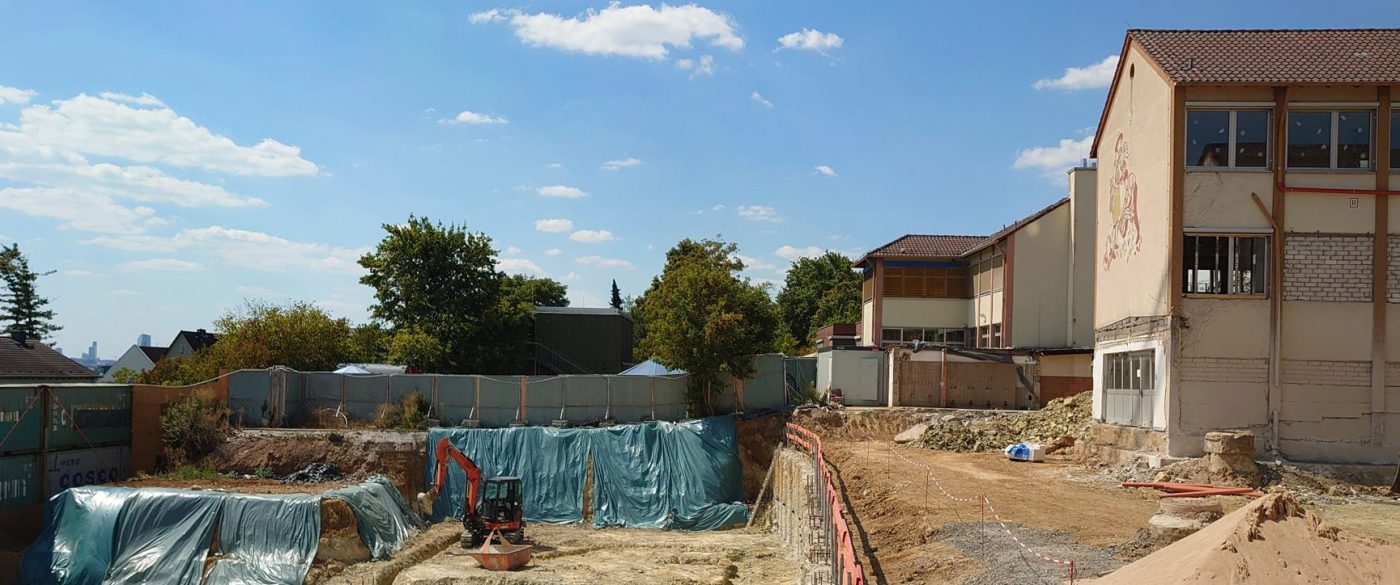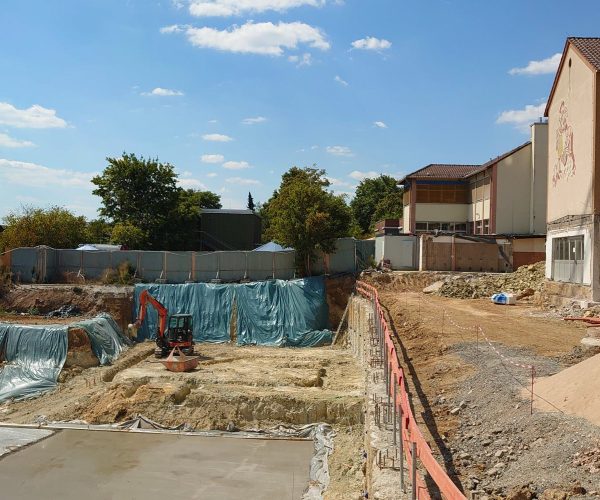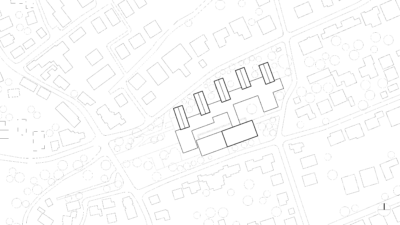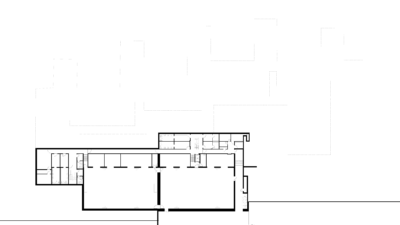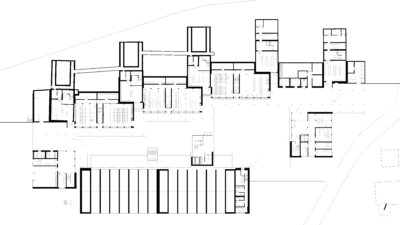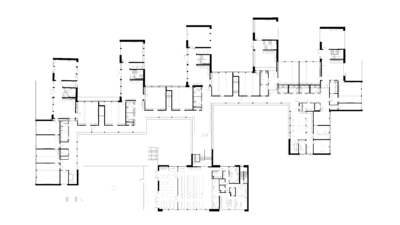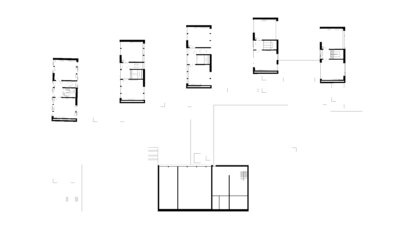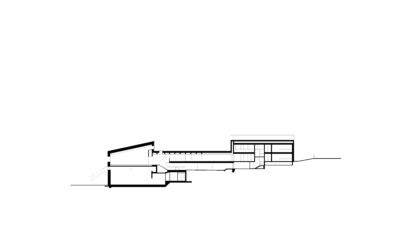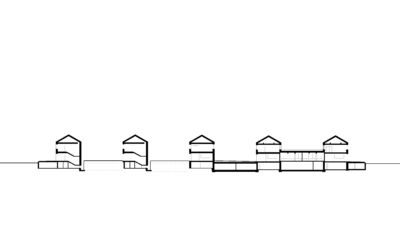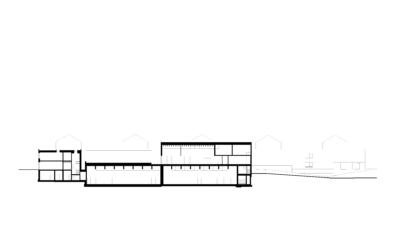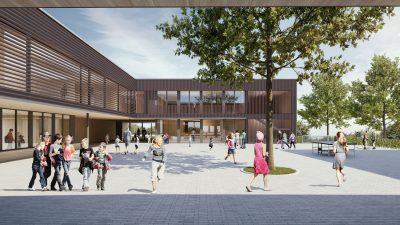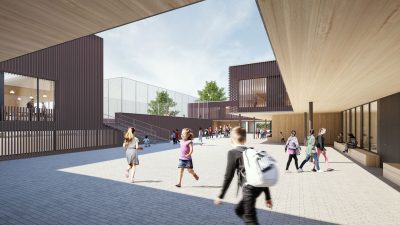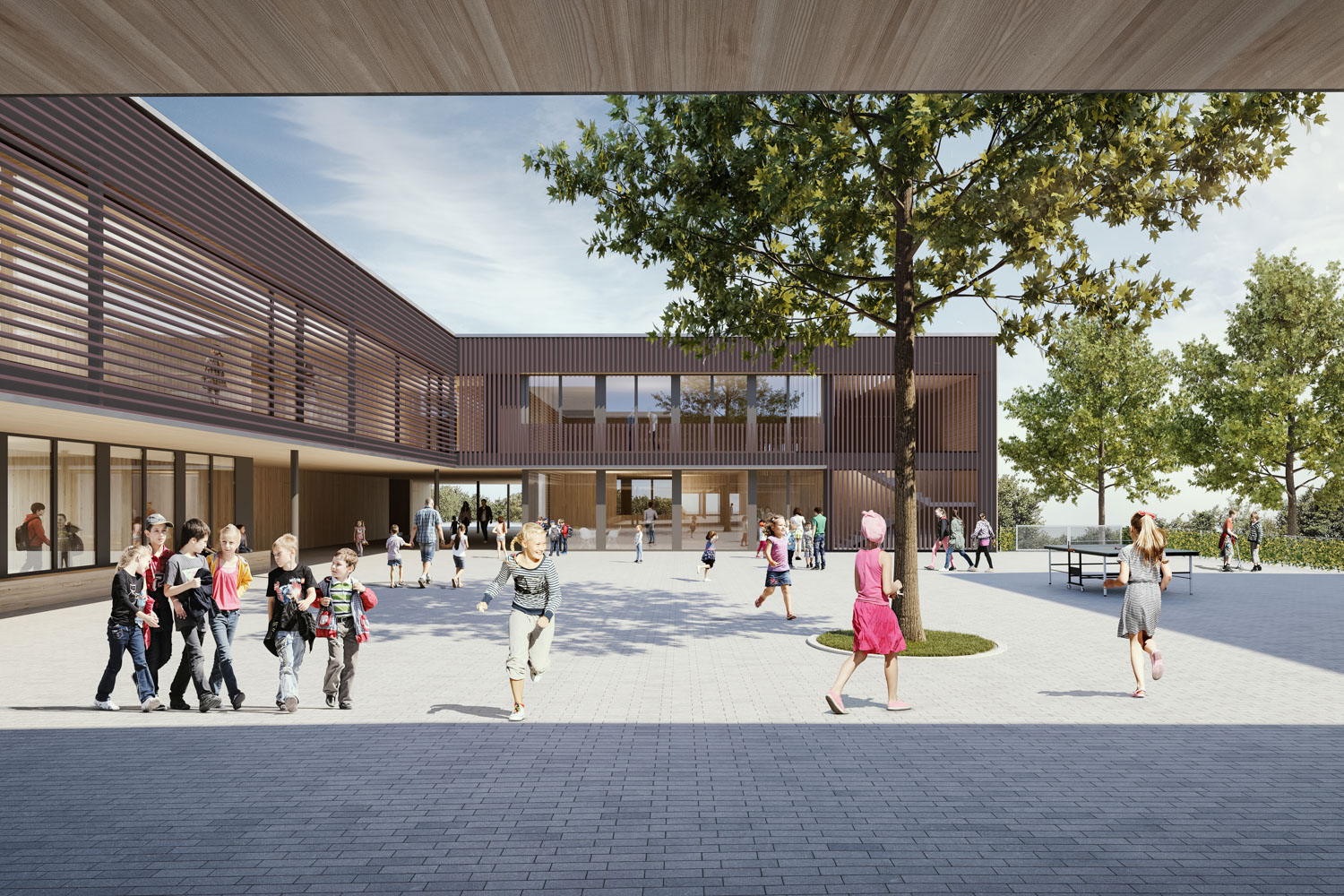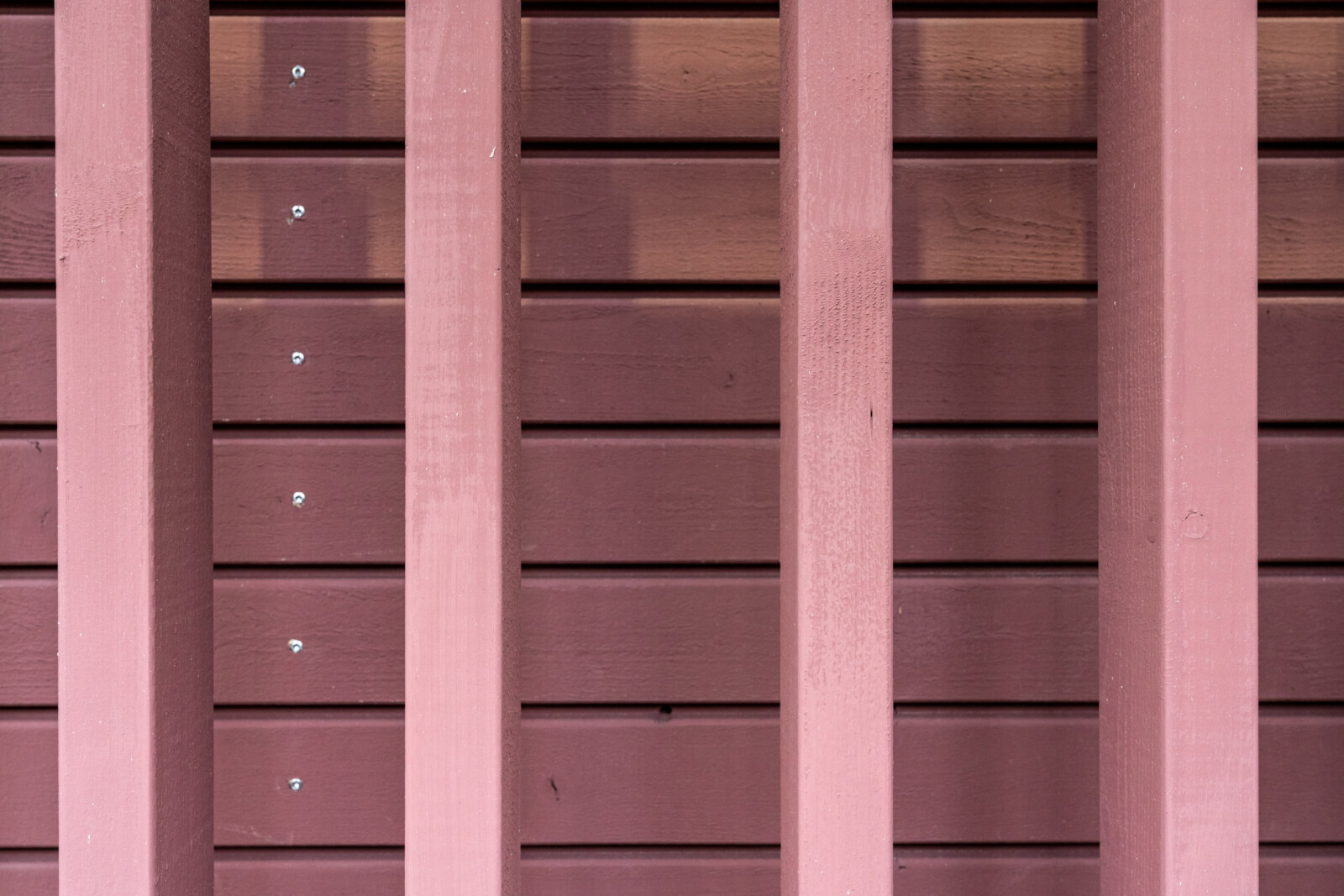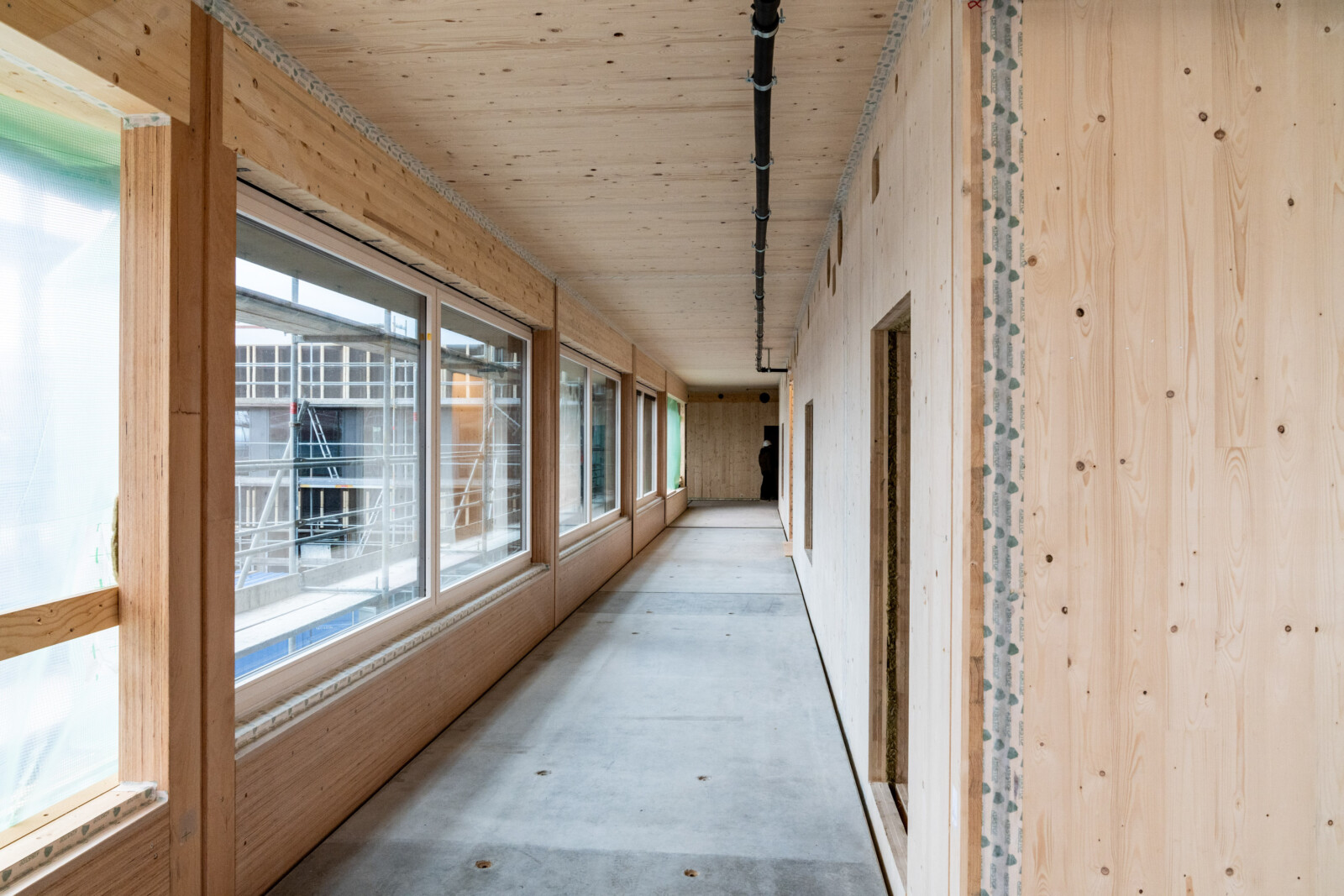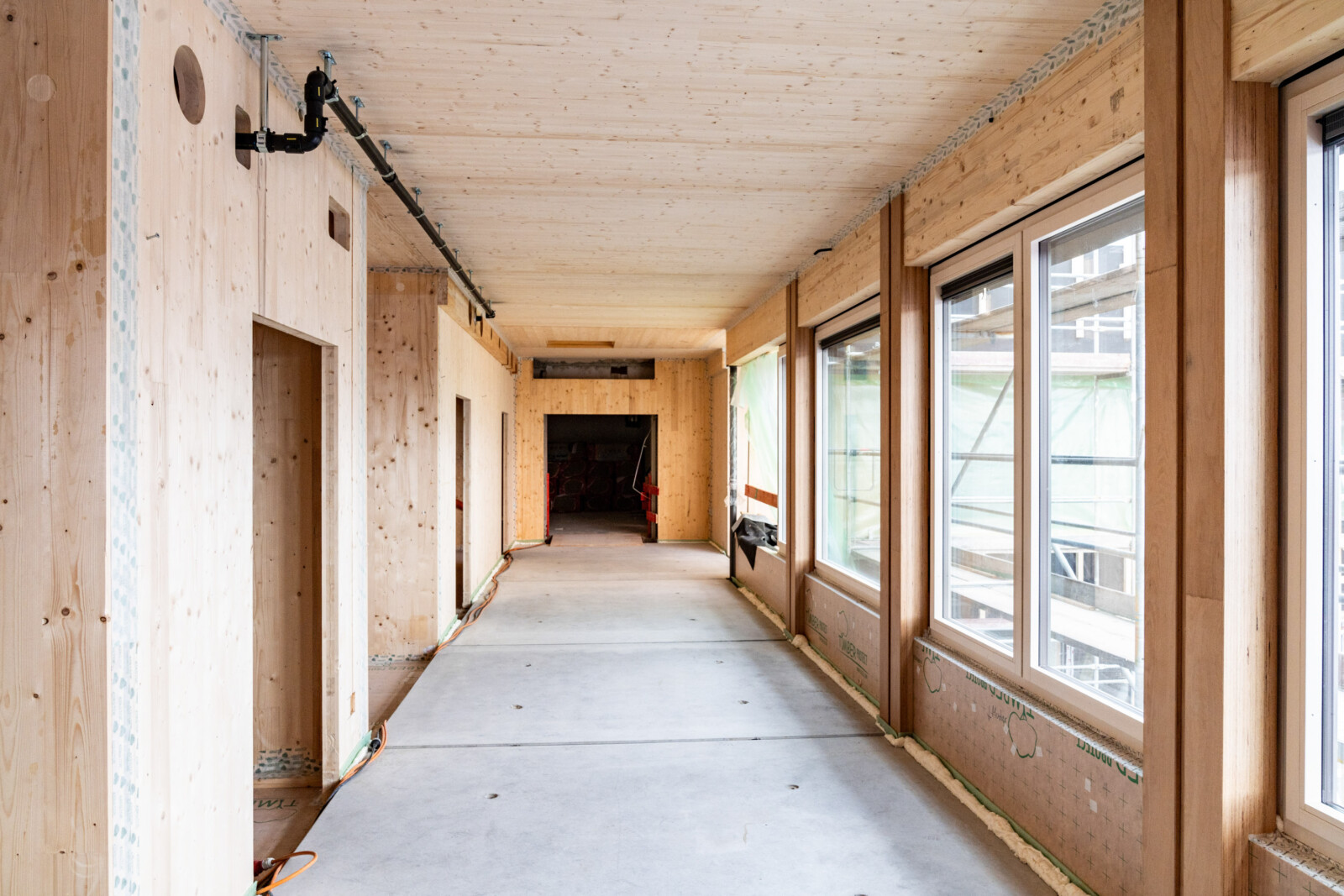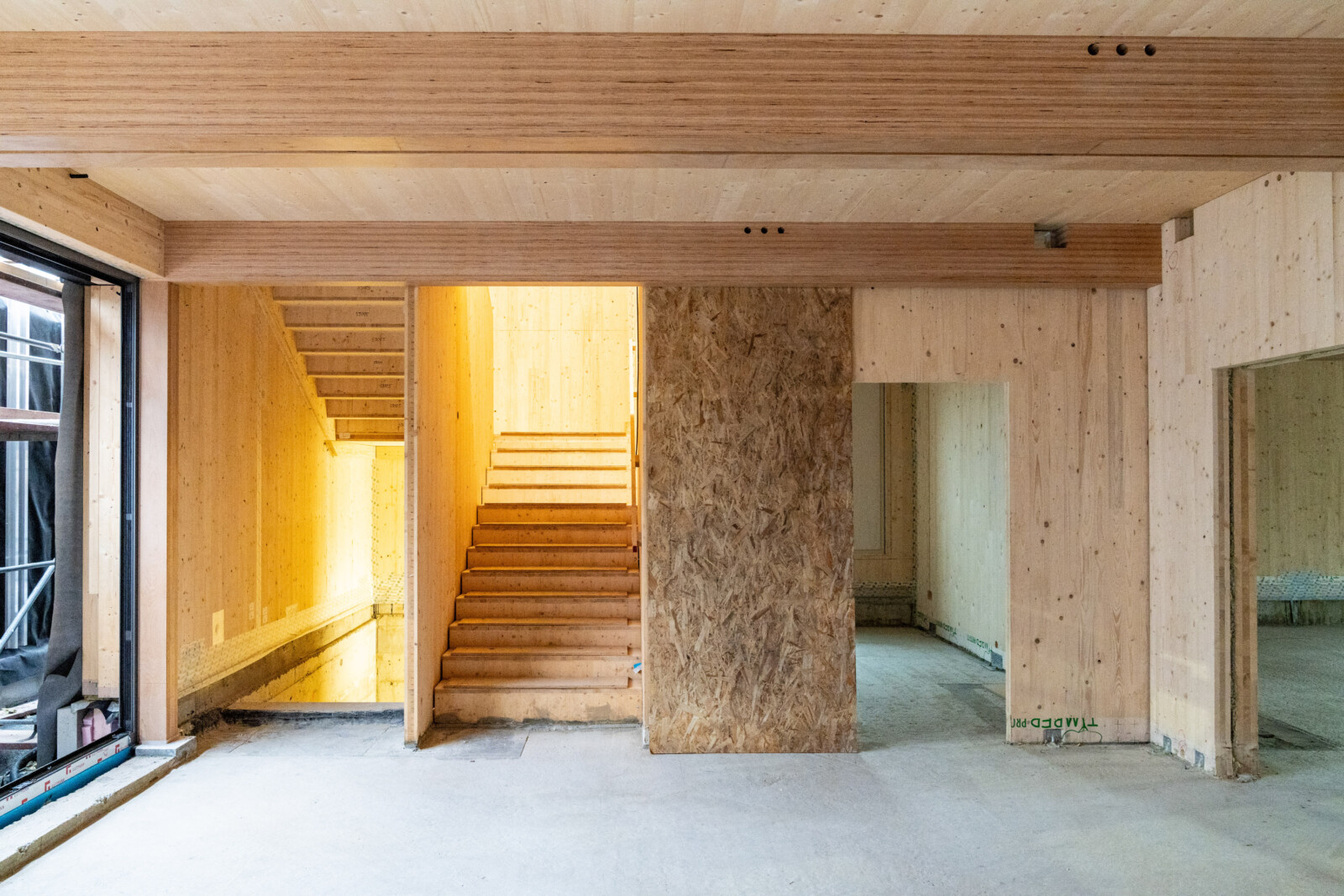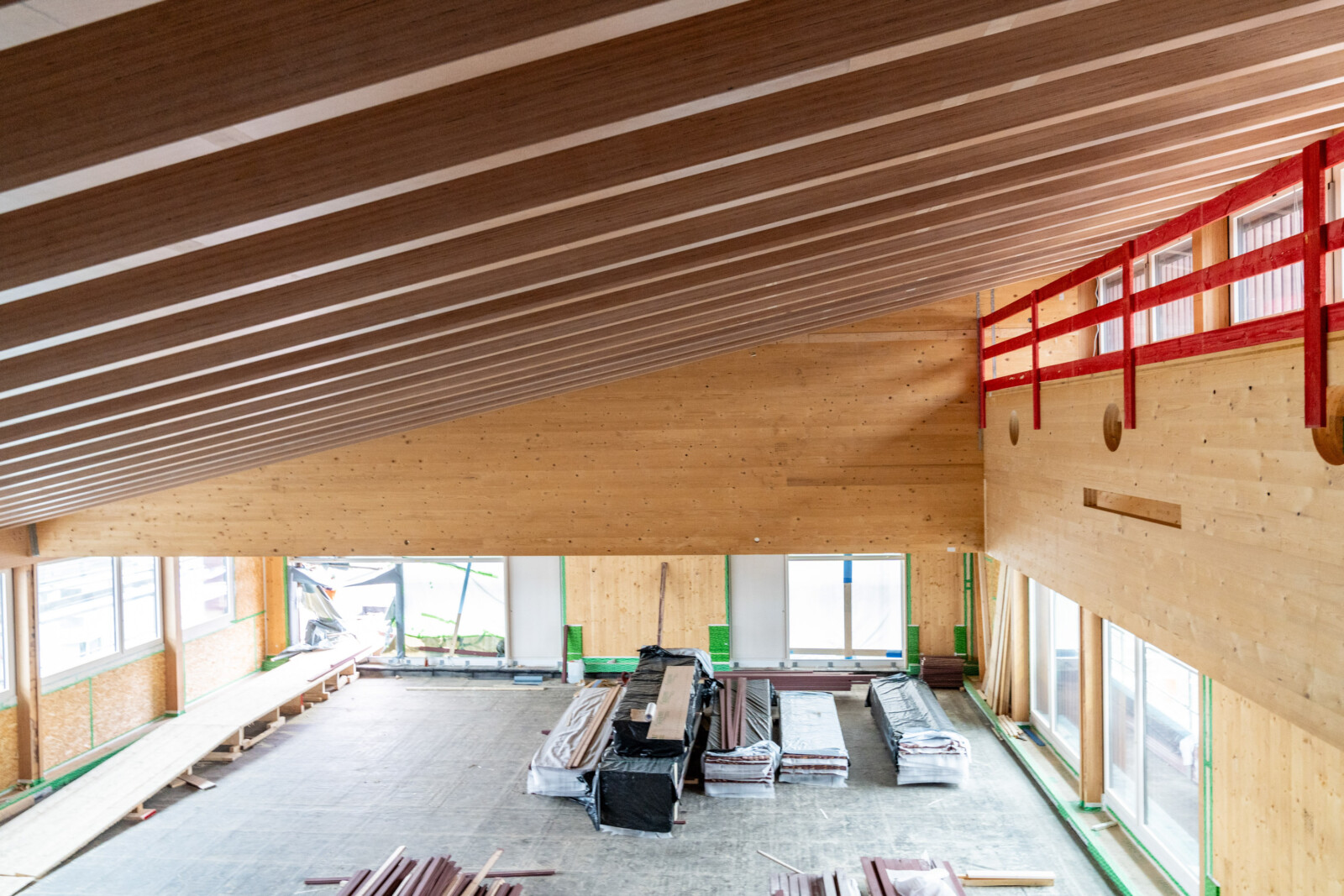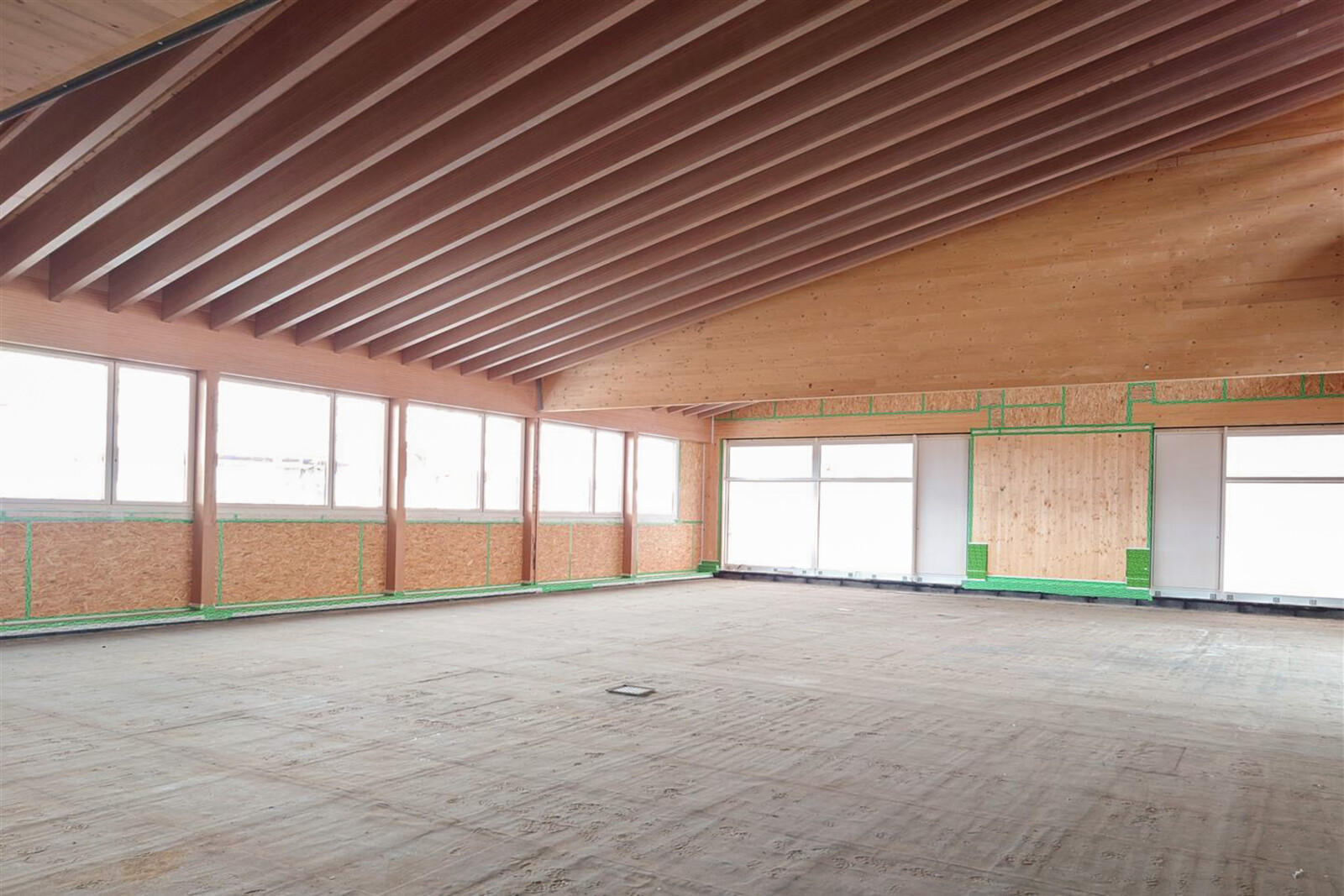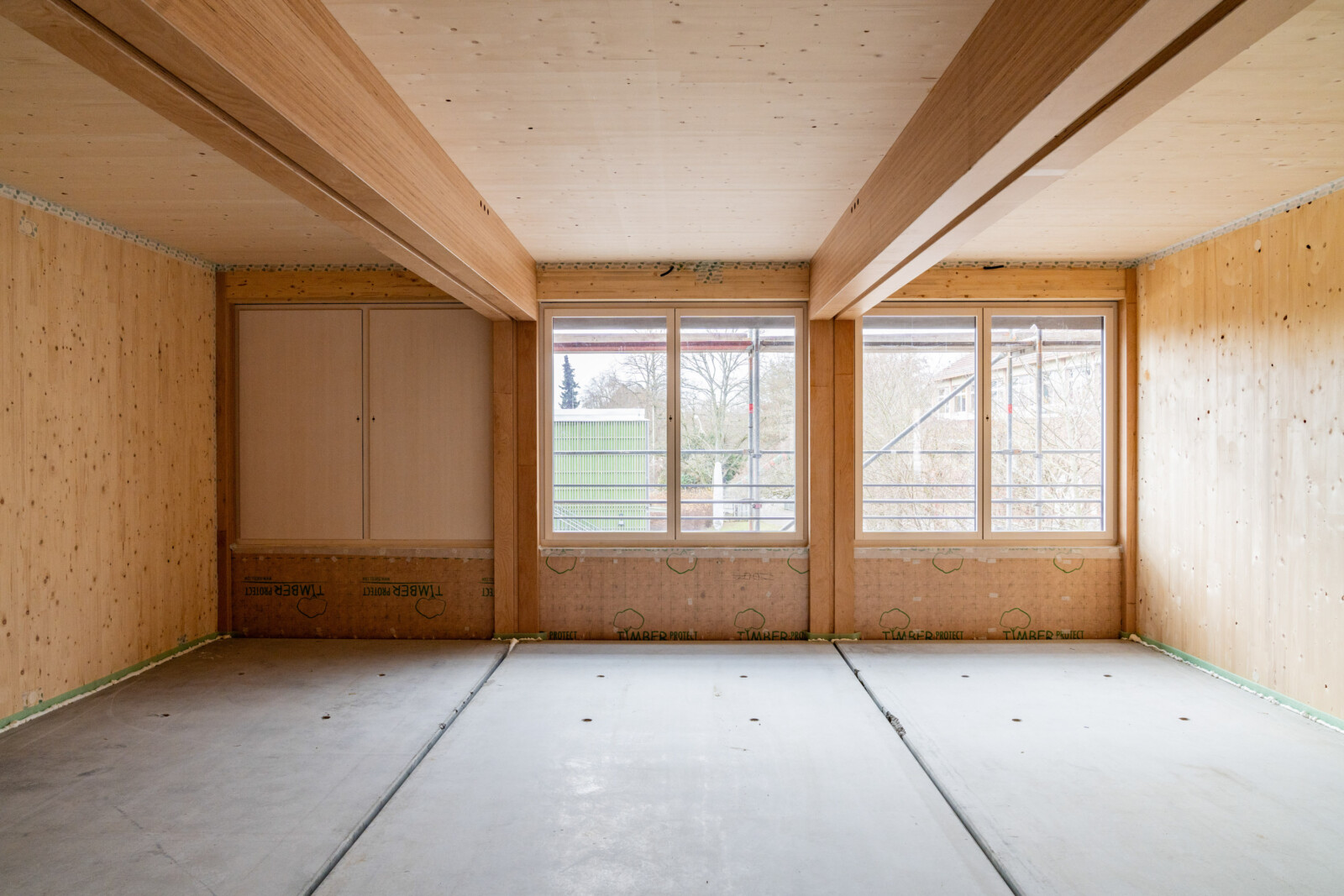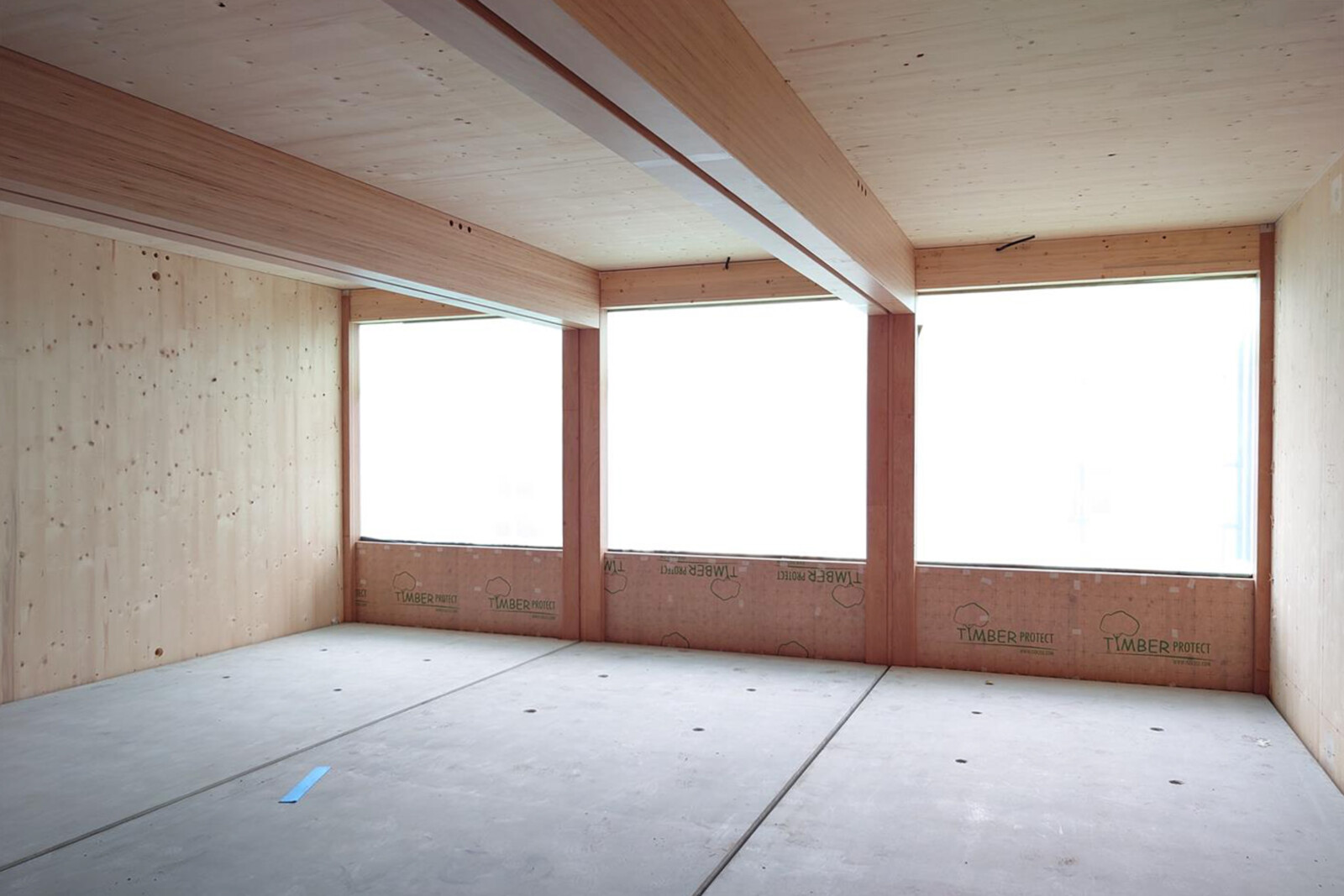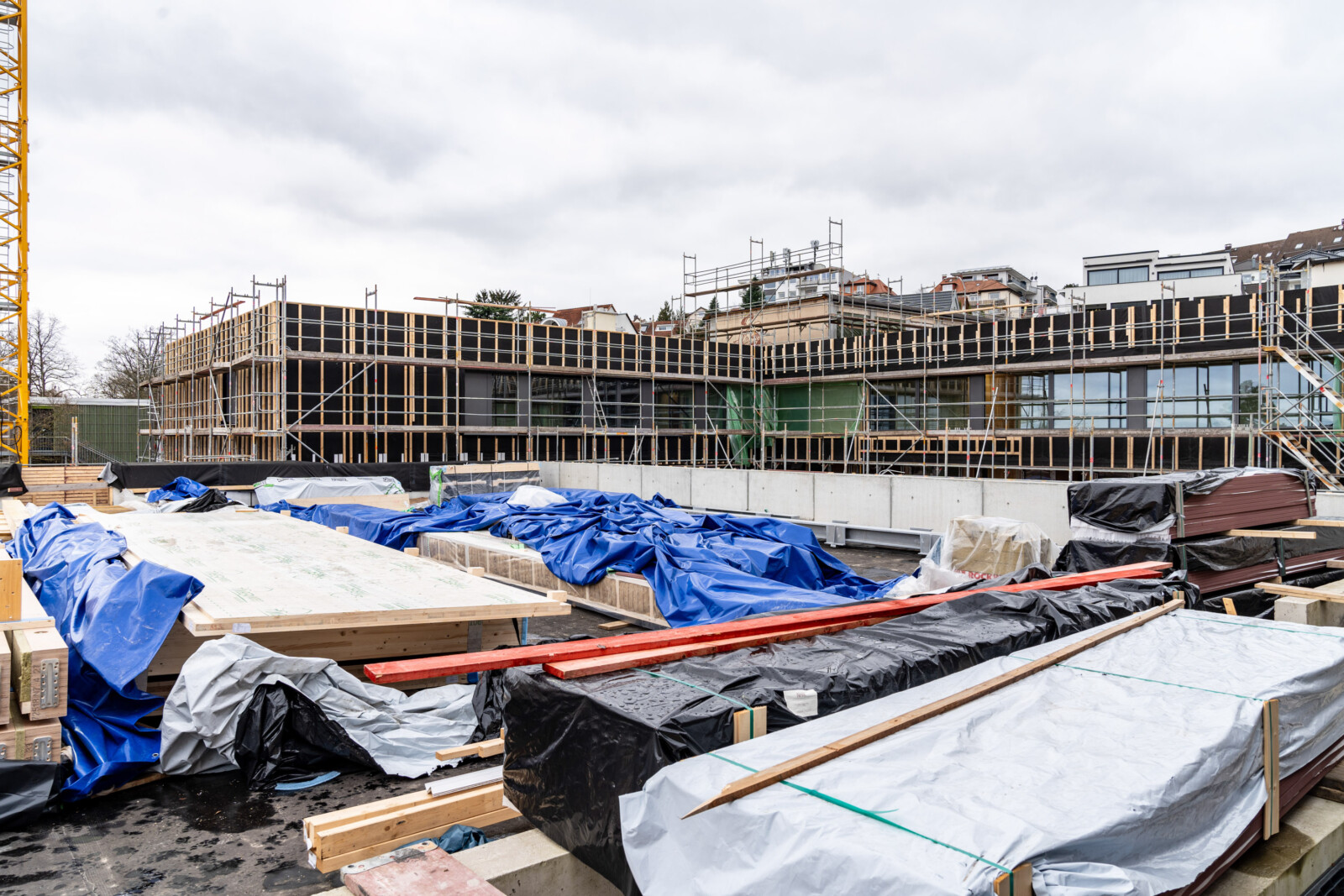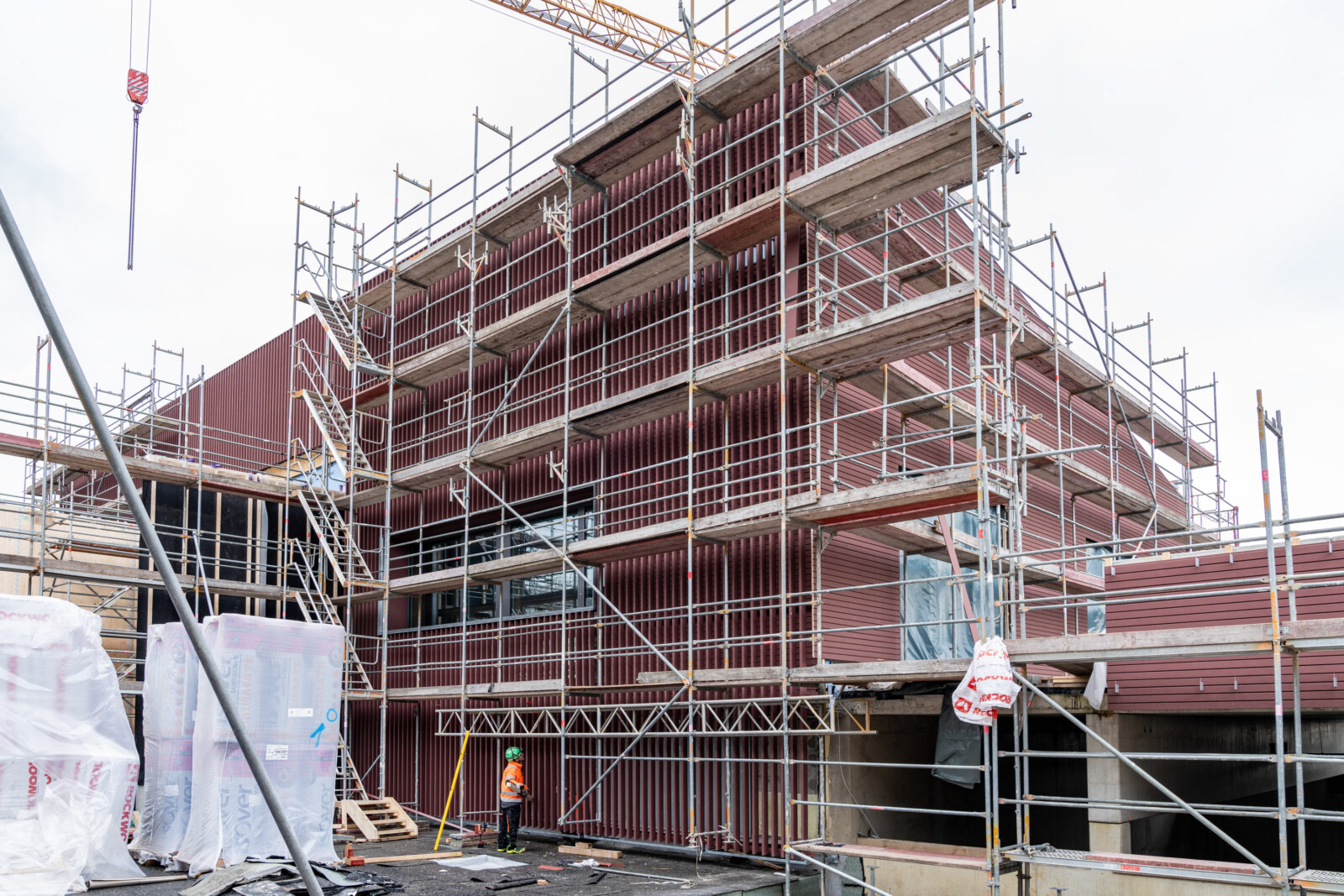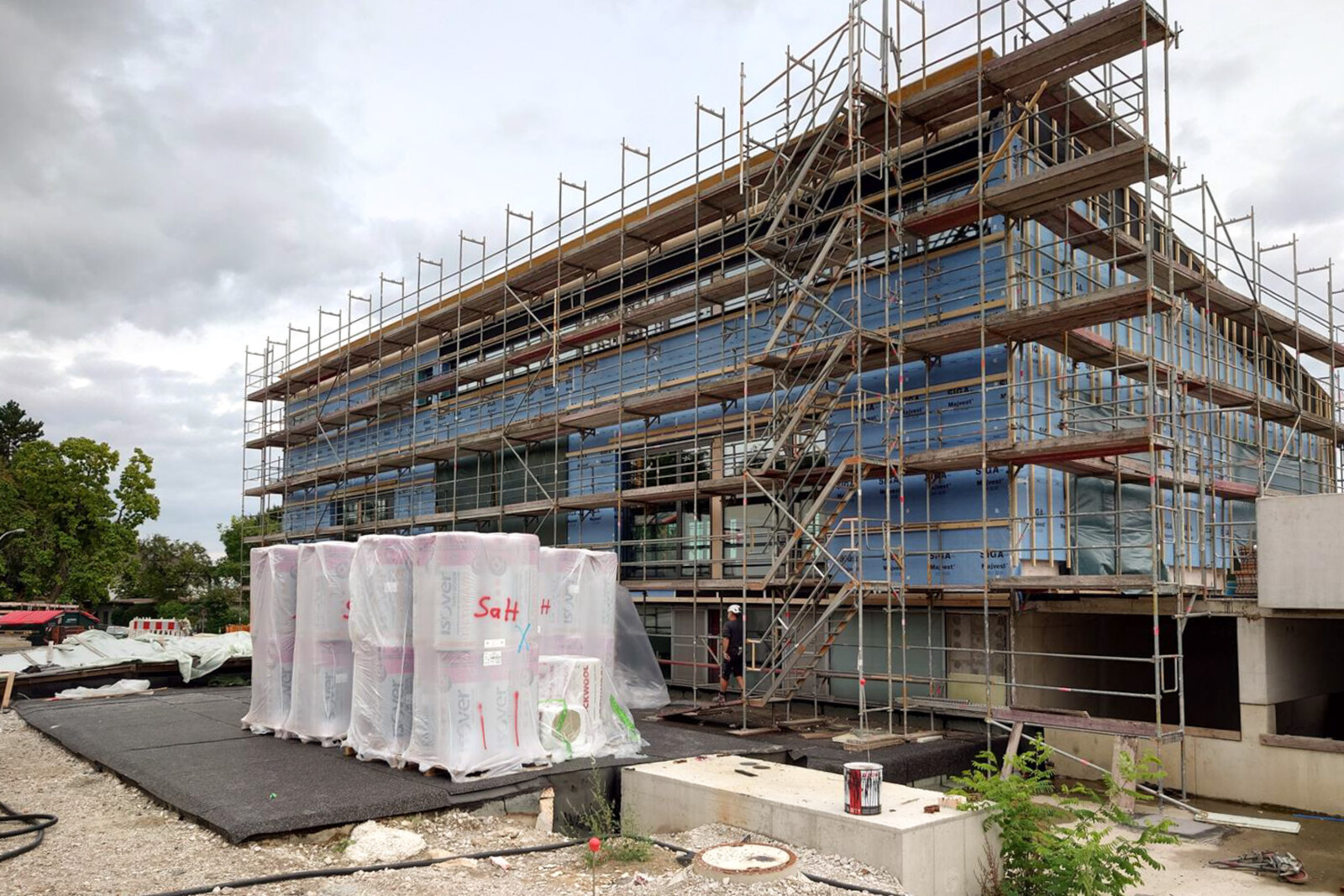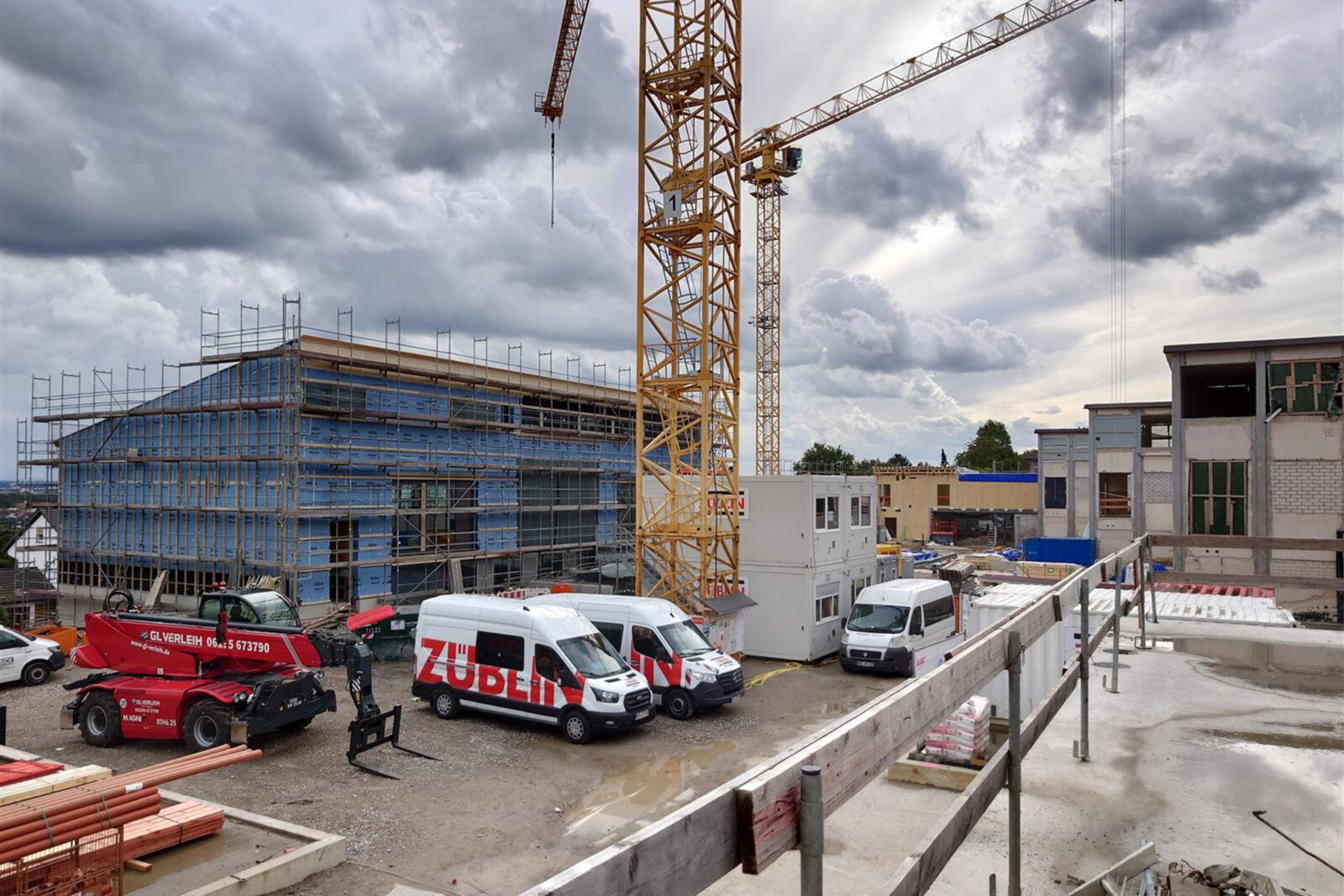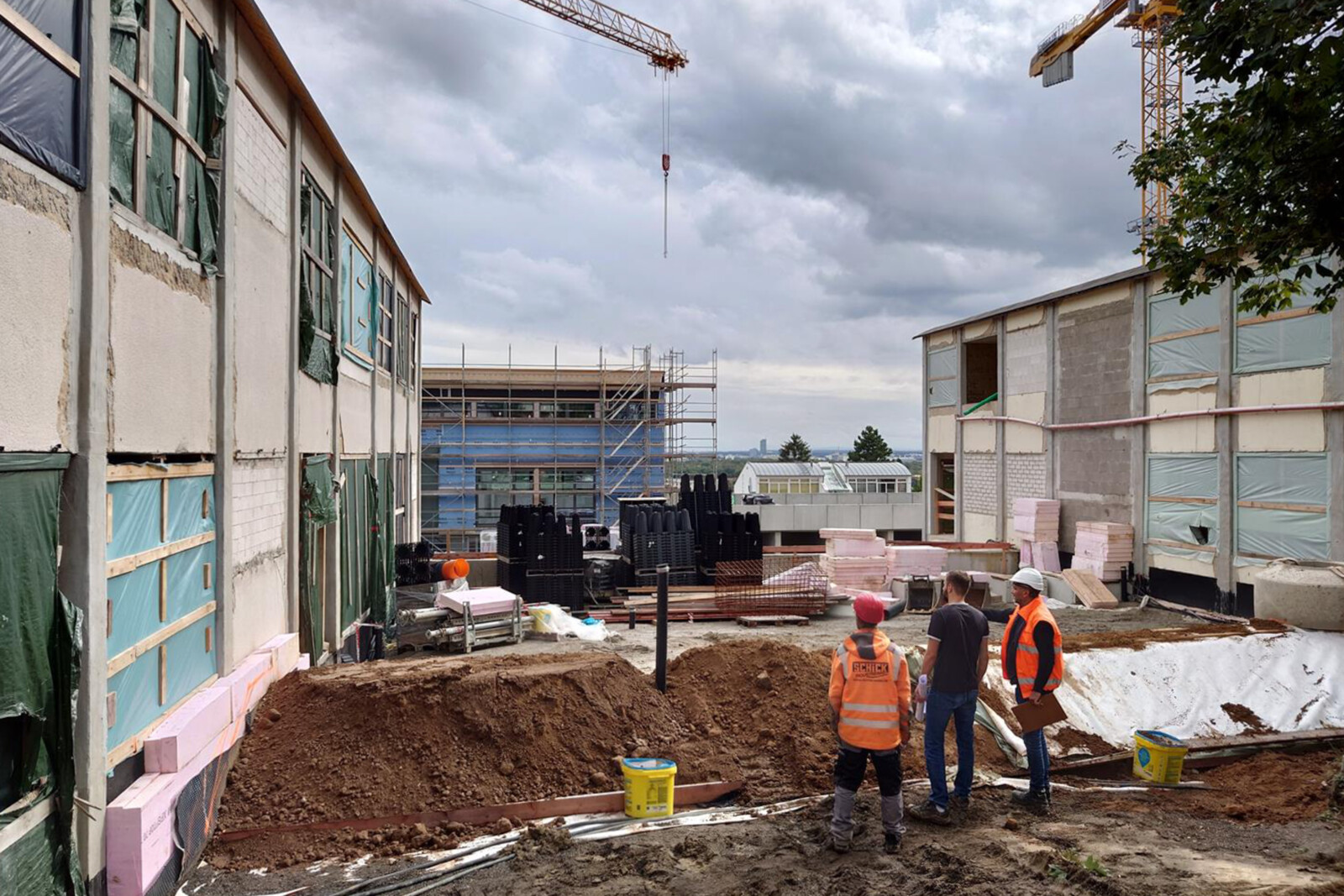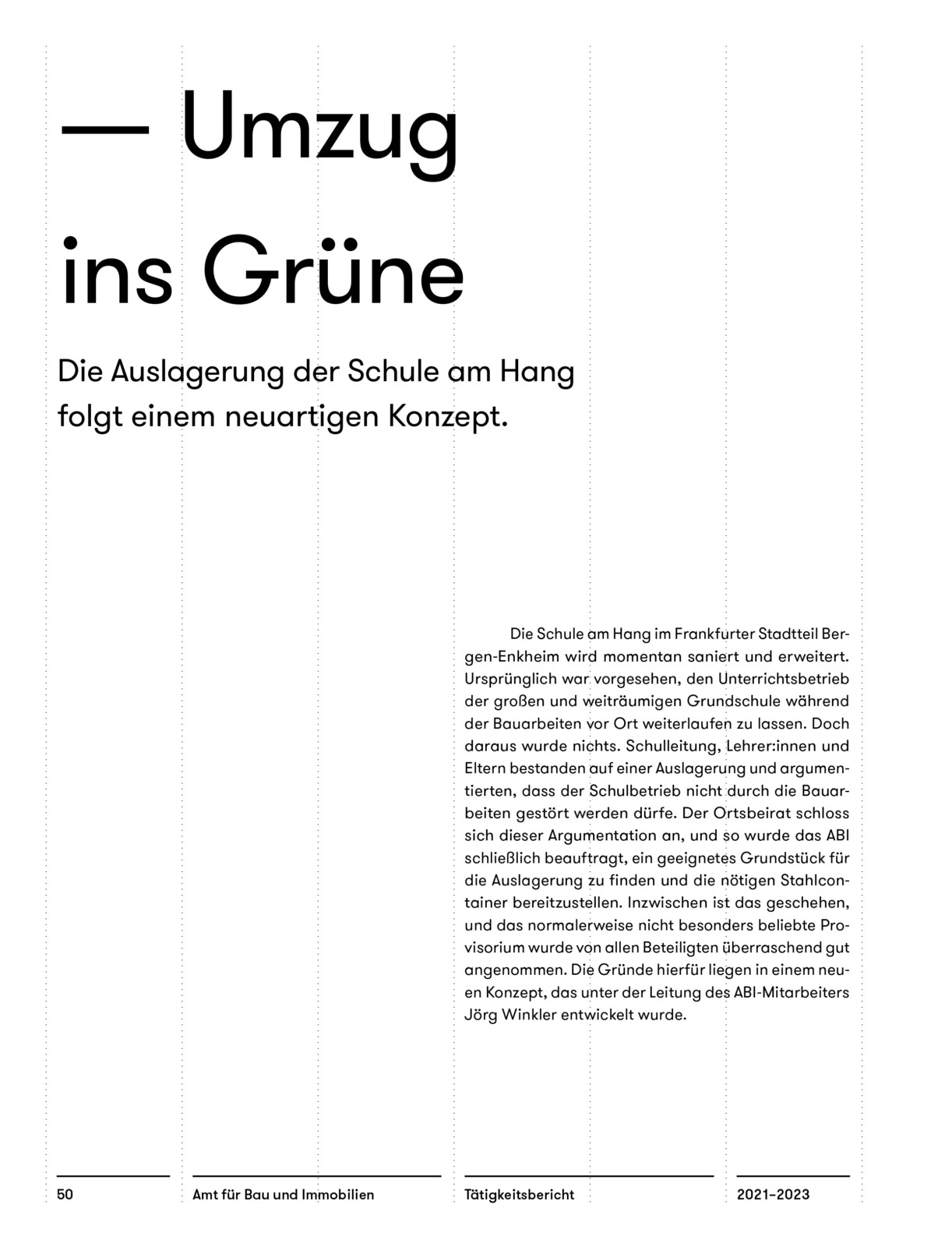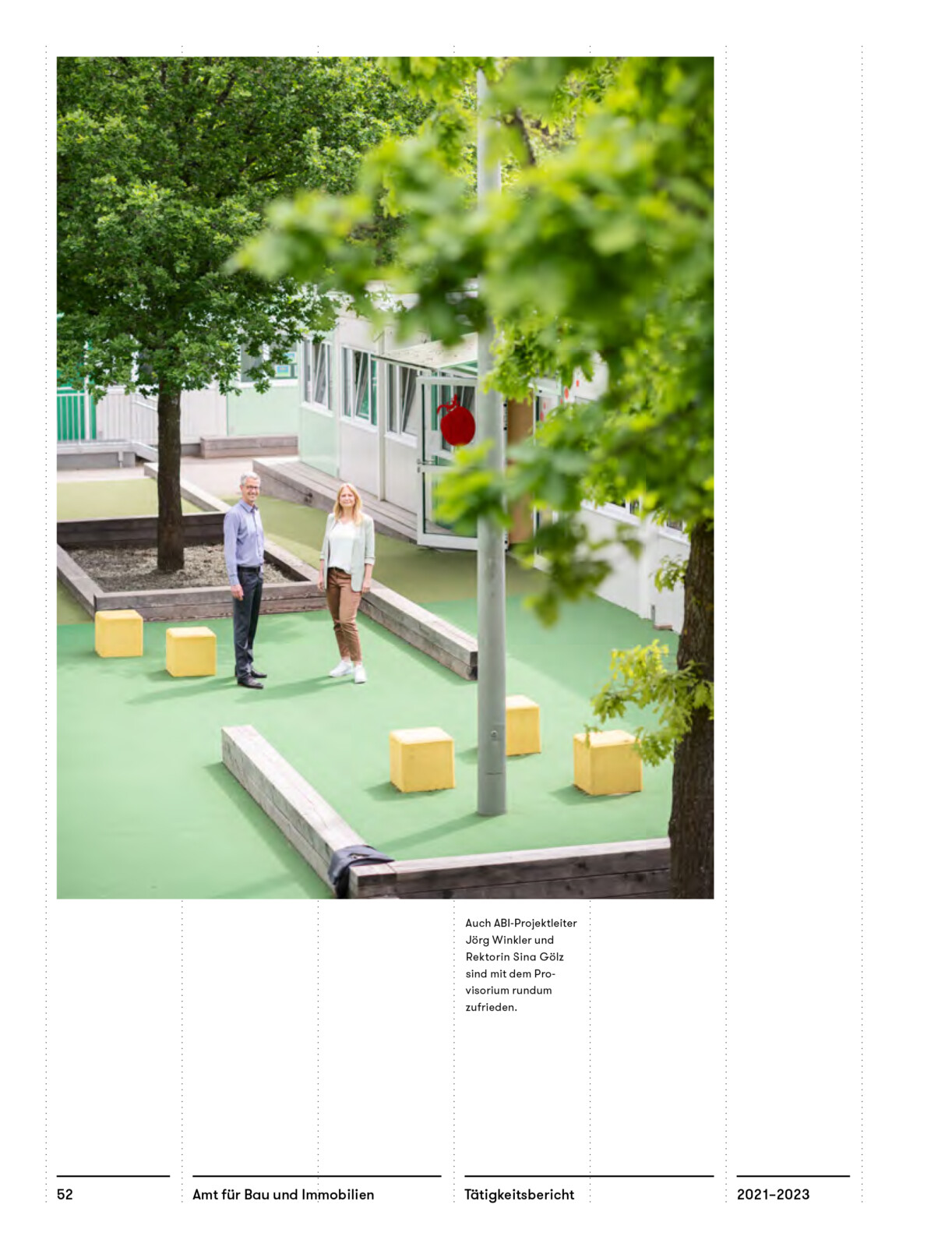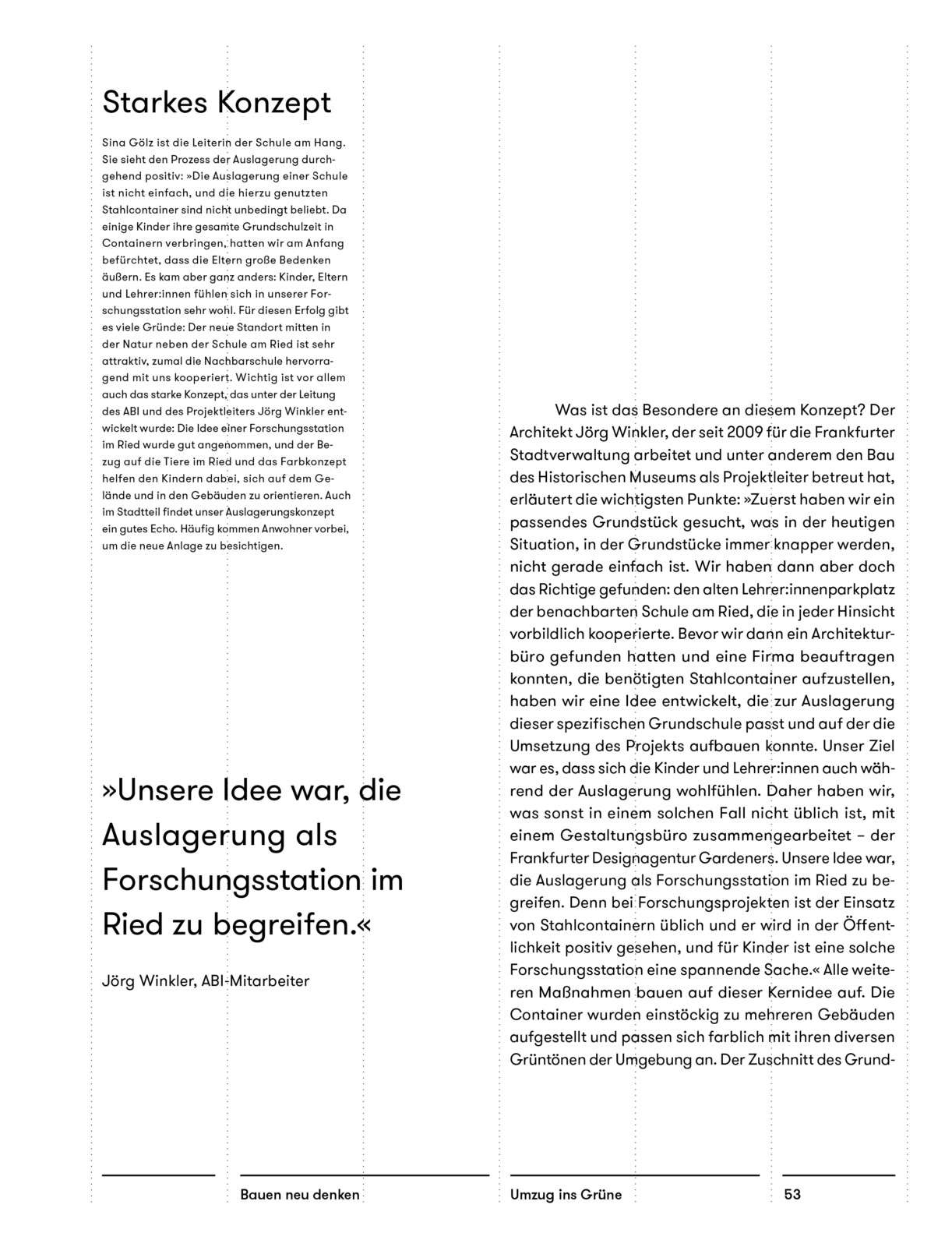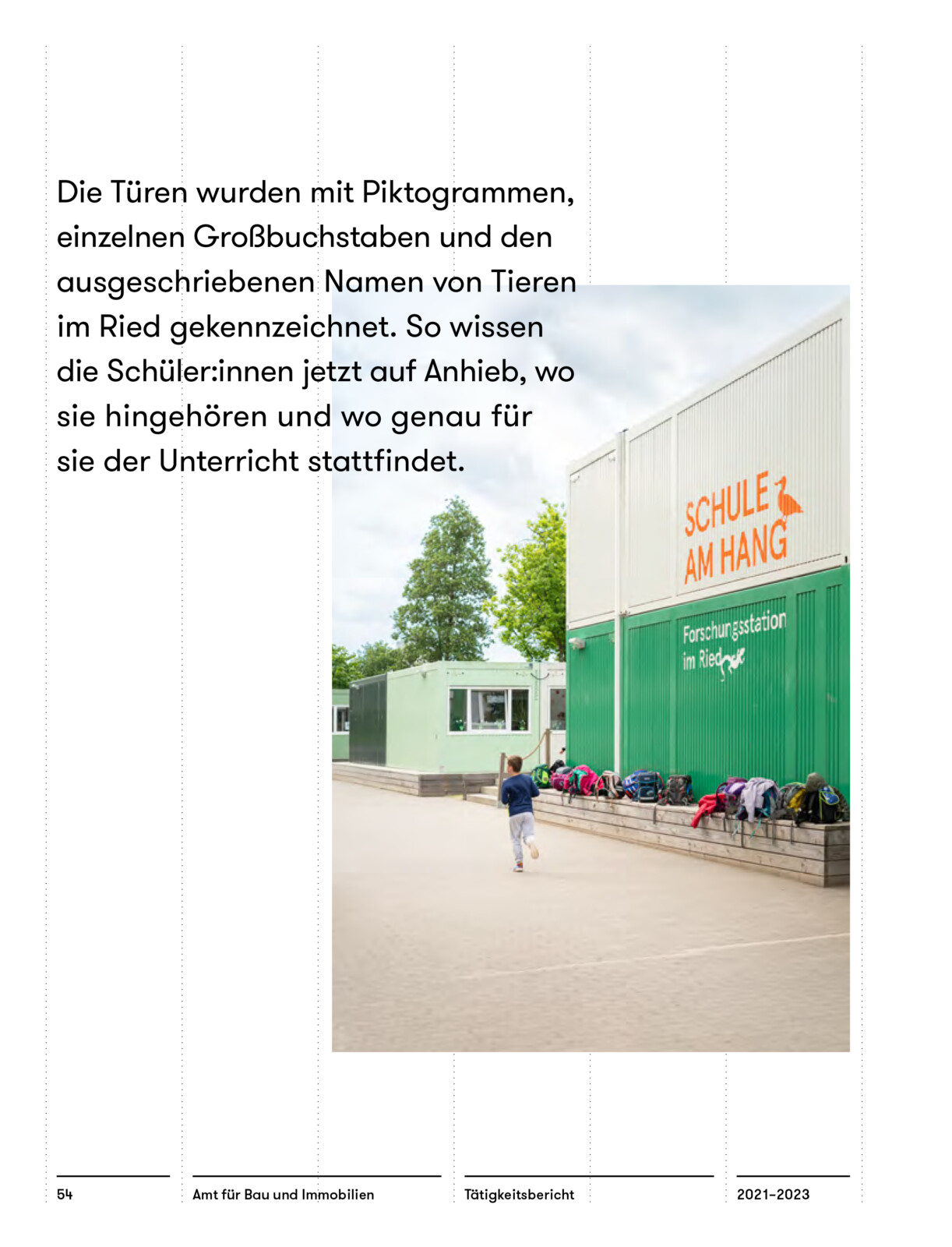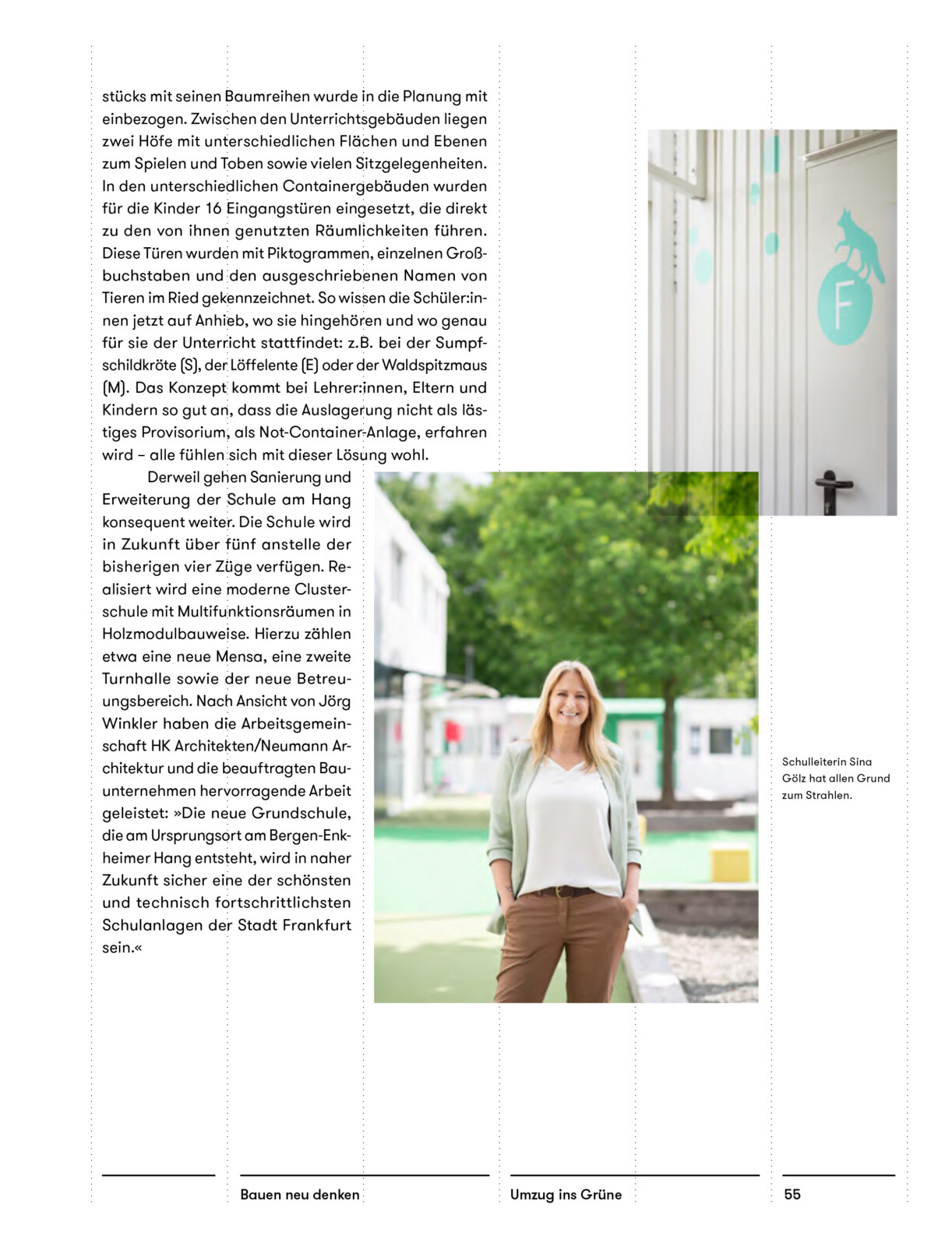Project Information
NEUMANNarchitektur
DI Thomas Fußenegger
DI (FH) Frank Neumann, NEUMANNarchitektur
Marco Roj, NEUMANNarchitektur
DI (FH) David Uhl
Martin Rümmele
Hanna Bayer B.A.
DI Mathias Schädler
Daniela Wache M.Sc.
DI Stefan Hiebeler
DI Christoph Dünser
Hannes Willi
Leonie Schäfer, NEUMANNarchitektur
Marcus Beringer, NEUMANNarchitektur
Arch. DI Roland Wehinger
DI (FH) Frank Neumann, NEUMANNarchitektur
DI (FH) Holger Umbach, NEUMANNarchitektur
Client
Magistrat der Stadt Frankfurt vertreten durch das Amt für Bau und Immobilien (AB)
Location
Frankfurt am Main
Completition
2025
Project Facts
n.b.ar. 8.239 m², GFA 11.864 m²,
GBV 47.242 m³
Projektphasen
Schule am Hang, Frankfurt
Rights
Photo NEUMANNarchitektur, HK Architekten
Text Marko Sauer
- Teaching Practices
Lernlandschaften, Röckingen - Structural Engineering
Brückner + Dietz, Darmstadt - Heating Ventilation and Sanitary Planning
D+K Ingenieurbüro, Bad Nauheim - Electronics Planning
Beiersdorf Herzhauser Planung, Frankfurt - Fire Protection Planning
Wagner Zeitter Bauingenieure GmbH, Wiesbaden - Bau- und Raumakustik
Ingenieurgesellschaft für Akustik und Bauphysik mbH & Co. KG (IAB), Oberursel - Geotechnical Engineering
Ingenieursozietät Professor Dr.-Ing. Katzenbach, Frankfurt am Main - Thermischen Bauphysik
Ing.-Büro Heinrichs GbR, Groß-Gerau - Kitchen Planning
PROFIL Gastronomie Planung und Innovation GmbH, Kriftel
Schule am Hang, Frankfurt
The Schule am Hang is one of 160 schools in Frankfurt am Main. The primary school did not provide enough space for the approximately 400 children, and the situation was becoming critical. The construction, with it’s the distinctive ridge structure, was to be renewed and expanded. The city conducted a competition and the winning concept by HK Architects builds on the existing spatial qualities and identity of the five classroom buildings. It preserves the comb-like structure with its two-sided exposure and the attractive view.
The extension of the school complex focuses on the areas that connect the five classroom buildings. A two-storey volume offers additional space and accessibility. Learning landscapes are created on the ground floors, and the specialist classes and the library in the socle, opening the classrooms to the two playgrounds. The outdoor facilities will be more closely integrated into the architectural concept, in the south of the complex a new cafeteria will be built and the existing sports complex will be expanded.
The neighbouring nursery can be used as temporary teaching spaces while the renewal works roll across the individual class rooms. As the classes can be still held on their own grounds, expensive rental containers are eliminated and the classes remain on site.
[competition text 2017, Marko Sauer, English Translation Bronwen Rolls]
